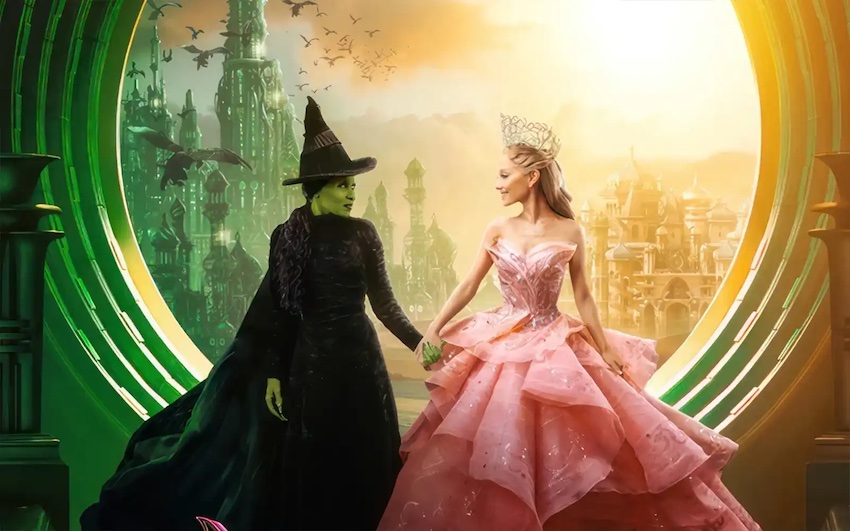To millions, J.R.R. Tolkien’s trilogy, The Lord of the Rings, is pure entertainment. For others, however, it is an epic journey, which appears to mirror an ancient text.
While Tolkien may not have written his Middle-earth trilogy specifically as a parallel to Christianity, his works can be interpreted as a biblical allegory.
For those not familiar with it, The Lord of the Rings tells the story of an innocent hobbit, Frodo, who must bear the burden of the One Ring, the personification of evil in Middle-Earth.
Aided by various loyal companions, Frodo set out on a dangerous journey to destroy the Ring, thereby defeating the evil threat of Sauron, the Lord of the Ring.
The burden of the Ring that Frodo carries can be viewed as the burden of sin. Because he took up the title of “Ringbearer,” Frodo’s selfless action could mirror that of Christ as He took the sins of the world on His own shoulders.
“Who knew a shy, simple country hobbit would purge his world of evil?” Elise Aydelotte, ’05, said. “Who knew a little-known, poor carpenter would change the world and life as we know it? Without Frodo, there would be no fellowship and no quest, and all would have ended in evil.
“Without Jesus, where would we be? No intimate relationship, no direct channel to God. It’s hard to fathom, and it’s somewhat frightening. All would have ended in evil.”
Like Frodo, many other characters could be seen as assuming the role of a Christ figure. The wizard Gandalf not only serves as a supportive father figure, but is also like Christ as he dies while confronting evil and then returns “until his task is done.””
“Gandalf’s fall while warding off the Balrong symbolizes Christ’s death and the victory over death that is the result,” Sarah McComb, ’04, said. “Then Gandalf is brought back to Middle-earth in the form of a more powerful entity. I think this parallels Christ’s resurrection.”
Just as Jesus Christ was prophesied about for generations before his birth, Aragorn’s character was likewise predicted in the Bible as the coming king of men.
Though he had previously refused to accept the throne of his forefathers, Aragorn realizes the importance of his role as the true King. He steps up and leads the fight between good and evil, becoming, in a sense, the savior.
“People thought that Jesus was just an ordinary man from Nazareth,” Brandon Cain, ’06, said. “Aragorn is a Ranger who is looked down upon and is never given the rightful respect he deserves as the heir to the throne of mankind.”
Character roles in The Lord of the Rings are not the only parallels to the Christian faith. Relationships between characters also have biblical similarities. The loyal friendship of Frodo Baggins and his friend, Samwise Gamgee, is viewed by many as the equivalent to that of David and Jonathan.
In the book of I Samuel, Jonathan risked his life to defend and protect David. Jonathan’s devotion to his friend is reflected in the character of Sam. Sam’s loyalty to Frodo places him before many perils yet he refuses to abandon his friend.
“Of all the biblical friendships I can recall, I must say that David and Jonathan’s relationship reminds me most of Sam and Frodo’s,” McComb said. “Both of these friendships remind me more of a brotherhood than a friendship. As Solomon writes in Proverbs 18:24, ?A man of many companions may come to ruin, but there is a friend who sticks closer than a brother.'”
While Sam and Frodo’s friendship parallels biblical relationships, it is also similar to a Christian’s bond with Jesus Christ. Jim Ware and Kurt Wagner express their viewpoint of Sam and Frodo’s relationship in the book, Finding God in the Lord of the Rings.
“Frodo Baggins was given Sam, a fellow hobbit who was not particularly bright or brave,” Ware and Wagner wrote. “He did not have the wisdom of Gandalf, the courage of Gimli, or the instincts of Strider. But he was trustworthy and loyal, and that is just what Frodo needed most.”
The trilogy’s heroes are not the only ones with links to the Christian faith. The tale’s evil villains are similar to those of the demonic world. The dark lord Sauron seems to represent the devil as he attempts to exercise total control over all Middle-earth by creating the One Ring in order to annihilate all good.
“Sauron, like the devil, represents evil,” Will Hierholzer, ’07, said. “He [Sauron] uses people’s weaknesses to ensnare them. He is also like the devil because he fell from good to evil.”
The creature, Gollum, could be seen as relating to the ever-present demons who try to force people to turn away from their walk with Christ, which is similar to Frodo’s quest.
“Gollum always turns up at the most inopportune time,” Cain said. “He is constantly a bother, just like Satan and his followers.”
Likewise, Sauron’s evil creatures, called orcs, can be viewed as demonic as well.
“Orcs are similar to demons because they are Sauron’s servants,” Hierholzer said. “They try to destroy people in Middle-earth just like demons, who, in real life, try to destroy your soul.”
In his works, Tolkien even includes an anti-Christ figure in the character of Saruman. Before the One Ring is found, Saruman was considered an ally among the people of Middle-earth. However, Gandalf soon discovers Saruman’s secret allegiance to Sauron and Saruman is revealed as a traitor.
“Saruman was the highest and most respected of all the wizards in Middle-earth,” Aydelotte said. “He stood for peace and justice until he was corrupted by the power evil offered him. Saruman was loved by the people until his fall, and then he was despised by all.”
Locations in Middle-earth also seem to compare to biblical places.
Sauron uses the dark land of Mordor to create greater evil than is ever imagined by the inhabitants of Middle-earth. To some, Mordor is the devil’s own domain, yet others see it as the world itself.
“Mordor is a lot like our world because evil rules it,” Hierholzer said. “Just as Sauron rules Mordor, so Satan is the Prince of this world.””
The Shire is often linked with the garden of Eden.
“Bilbo’s bringing the Ring to his home is like sin entering the Garden of Eden,” Aydelotte said. “It [the Shire] was a perfect, peaceful place and evil did not know of it–until the Ring came. Due to the Ring, Frodo was ?forced’ out of his home to lead the evil away.”
For more parallels between The Lord of the Rings and Christianity, check out Ware and Wagner’s book Finding God in the Lord of the Rings, available in the campus library.” “Cale Livingston, Graphic artist” “J.R.R. Tolkien’s novel Lord of the Rings is thought by many to contain parallels to the Bible. ” “[Courtesy] www.lordoftherings.net” “Tolkien’s Middle-earth trilogy retells the story of a hobbit, Frodo, left, who bears a burden to defeat an evil threat.” “Lord of the Rings homepage






